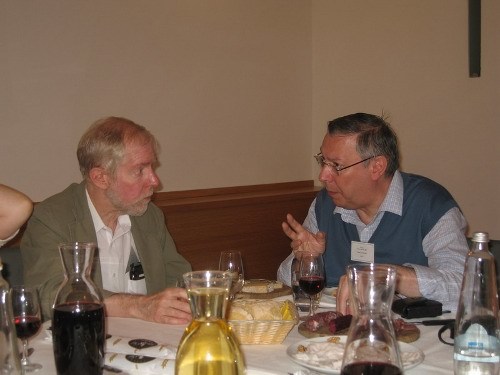Planetary Lensing: Enter the ‘Terrascope’
I’m always fascinated with ideas that do not disrupt the known laws of physics but imply an engineering so vast that it seems to defy practical deployment. Centauri Dreams readers are well aware by now of some of Robert Forward’s vast mental constructions, including lightsails in the hundreds of kilometers and enormous lenses in the outer Solar System as big as some US states. But such notions abound in the realm of interstellar thinking. Thus Clifford Singer’s ideas on pellet propulsion to a receding starship, which from the mathematical analysis require an accelerator 105 kilometers long, an engineering nightmare.
But then, when we reach sizes like these, we might ask ourselves whether we’re not overlooking the obvious. When Cornell’s Mason Peck went to work on wafer-scale spacecraft, one futuristic notion that occurred to him was to charge swarms of tiny ‘sprites’ through plasma interactions and use Jupiter’s magnetic field as a particle accelerator, pushing the chips to thousands of kilometers per second. That gets you to Proxima Centauri at, conceivably, a tenth of lightspeed. And instead of building a vast accelerator, you use the one the Solar System already has.
Columbia University’s David Kipping likewise investigates what we can do with natural objects. Years ago, he became fascinated with Claudio Maccone’s ideas for a FOCAL mission, which would use the Sun’s own mass as the instrument for ‘bending’ starlight to a focus at about 550 AU, one that might be exploited by future deep space telescopes. I put ‘bending’ in apostrophes because actually the light never bends, but flies straight and true through spacetime curved by the presence of mass. The Sun has 300,000 times the mass of the Earth, a useful object!

Image: Writing about Italian physicist Claudio Maccone gives me the chance to tap a favorite memory. Here I’m at the left, having lunch with Claudio ten years ago in the Italian Alps. This was one of many sessions in which Claudio helped me understand the implications of gravitational lensing. Credit: Roman Kezerashvili (City University of New York).
No one in the rich history of gravitational lensing concepts from Einstein through Von Eshleman and on to Maccone, Geoff Landis and Slava Turyshev has done more for the field than Maccone himself, having submitted a proposal to the European Space Agency for FOCAL as far back as 1993, and having authored the key text,
Paul Gilster's Blog
- Paul Gilster's profile
- 7 followers



